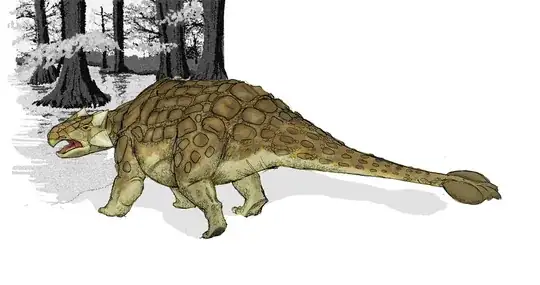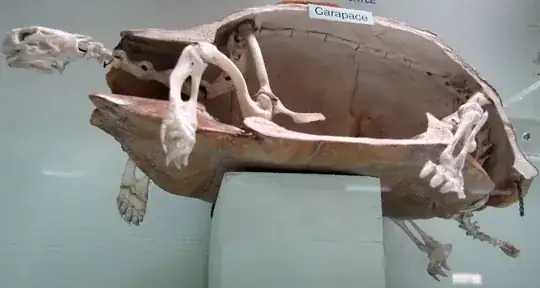Pressure at a point is not important
You mention that the bite strength is 430,000 psi. That isn't a bite strength, that is a bite pressure felt at a tooth tip. Two things are relevant here. First, that that amount of pressure will dent just about anything. Second, that amount of pressure will surely dent tooth enamel before it will dent a hard modern steel. So, the pressure you quoted will be doing more damage to the T. Rex's teeth than to any metal structure that I'm about to discuss.
However, a T. Rex can still damage a steel cage, due to its bite strength. But the true measure of its bite strength is in units of force. The Smithsonian Mag gives T. Rex's bite strength at 12,800 lbs, or 57 kN.
How to see if an item is damaged
This can do a lot of damage. On page 12 here, there is a list of materials and their yield stresses in MPa. The pressure rating is calculated by dividing the bite strength by the cross section of the material being bitten. If T. Rex bites a standard brick (yield stress 50 MPa), the brick's width and height are 0.089 x 0.064 meters, or 0.0057 m$^2$. Divide the bite strength by this cross section and you get 10 MPa. So a T. Rex can't crush a brick outright, probably.
However, this is only crushing. There are various other way to destroy a brick. The same table shows a brick's tensile strength as 7 MPa. The same force applied in tension could pull a brick apart. A T. Rex can't quite do that motion, but it can apply a shear stress to the brick, and probably would since its teeth are lined up to shear; i.e. the teeth don't touch point to point. So if the T.Rex bit a brick, the local stresses between teeth would create powerful shear forces and overwhelm the brick.
What can survive a T. Rex bite?
ASTM A656 is a high strength, low alloy steel commonly used as the structural component in truck frames. It has a tensile strength of 550 MPa. If we want the T.Rex's bite to reach no more than 50% of the yield strength, to ensure that we stay safe, then we need a cross section of $\frac{57 \text{ kN}}{550 \text{ MPa}\cdot 0.5} = 0.0002 \text{ m}^2.$ This works out to a piece of steel about 1 cm in radius; or about a 11/16" steel rod (these things are measured in inches of diameter).
T. Rex isn't so strong compared to a car
T. Rex's skull is about 1.5 meters long. Lets say his range of bite is 1 meter. Work, or energy, is force times distance, so a 57 kN bite over 1 meter is 57 kJ.
A car with mass 1000 kg moving at 35 mph is going about 15 m/s. Using the kinetic energy equation, this is about 113 kJ; or just over twice the energy of a T. Rex bite. An F-150 truck is more like 2200 kg; at highway speeds it is at 30 m/s. This works out to 1000 kJ; 20 times the work or energy a T. Rex is putting out.
So you can see that the stress a car bumper faces in a crash is going to be much higher than anything a T. Rex can do. If you look at the structural components of your car's bumper, there really aren't any solid metal components over 2 cm in diameter, other than the car's frame. Having been in a few accidents, a few car to car impacts at low speeds (> 20 mph) won't really bend the frame, at least not much. Since these slower impacts are roughly equal to a T. Rex's bit, this passes the smell test as reasonable.
Conclusion
A 1 cm radius steel rod made of the same material as a car frame should resist a T. Rex bite pretty well. Overall, given the energy comparison in a T. Rex bit and a car crash, the materials and design of your car bumper should be up to the task of anti-T. Rex armoring.


